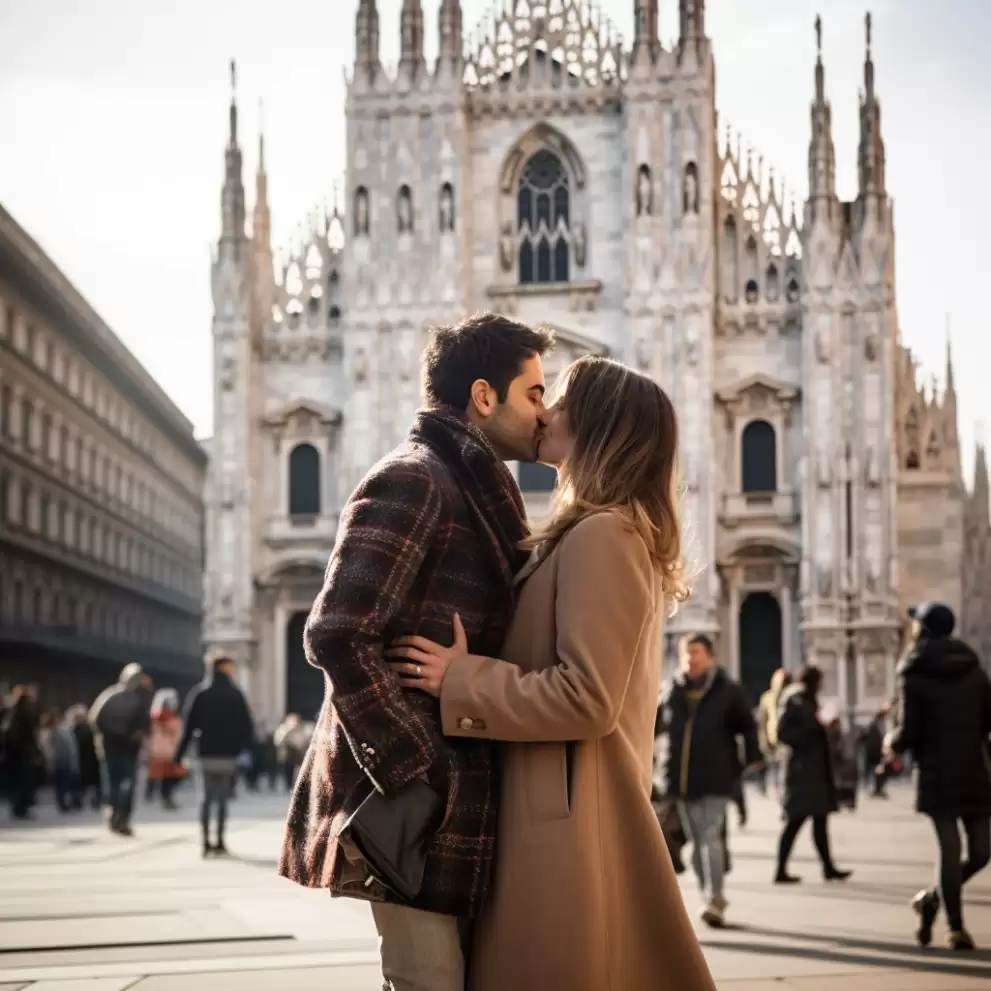While the construction of the Milan Cathedral, known as the Duomo, began well before the Romantic era, it is still associated with the spirit and aesthetics of Romanticism.
While the construction of the Milan Cathedral, known as the Duomo, began well before the Romantic era, it is still associated with the spirit and aesthetics of Romanticism. The Romantic movement, which emerged in the late 18th and early 19th centuries, emphasized emotion, awe-inspiring nature, and a fascination with the past.
Here's how the Milan Duomo can be connected to Romanticism:
-
Sublime Beauty: Romanticism celebrated the concept of the sublime—the experience of encountering something grand, overwhelming, and awe-inspiring. The Duomo's grandeur, with its soaring spires, intricate details, and imposing size, evokes a sense of awe and majesty, reflecting the Romantic notion of the sublime.
-
Historical Revival: Romanticism often drew inspiration from the medieval past, embracing a fascination with history, folklore, and ancient traditions. The Duomo's Gothic architecture, with its pointed arches, ribbed vaults, and elaborate ornamentation, evokes the medieval period. It embodies the Romantic interest in reviving and celebrating historical styles.
-
Emotional Response: Romanticism emphasized the power of emotions and sought to evoke strong feelings in the viewer. The Duomo's architectural beauty, when viewed from various angles and approached up close, elicits a range of emotional responses—awe, wonder, and a sense of being transported to another time.
-
Connection to Nature: While the Duomo is a man-made structure, Romanticism often celebrated a connection to nature. From the rooftop of the cathedral, visitors can observe the surrounding cityscape, including nearby parks and glimpses of the natural world beyond. This interplay between the urban environment and nature can resonate with the Romantic appreciation of the sublime in the natural world.
-
Symbolism and Mythology: Romanticism often incorporated symbolism and mythological references in its artistic expressions. The intricate sculptures and decorations found on the Duomo, such as biblical figures, saints, and mythical creatures, carry symbolic meanings and reflect the Romantic interest in allegory and mythology.
Although the Milan Duomo predates the Romantic era, its grandeur, historical revival, emotional impact, and connections to nature align with the themes and aesthetics embraced by the Romantic movement. It continues to captivate visitors with its sense of awe, beauty, and a glimpse into a bygone era, resonating with the spirit of Romanticism.
